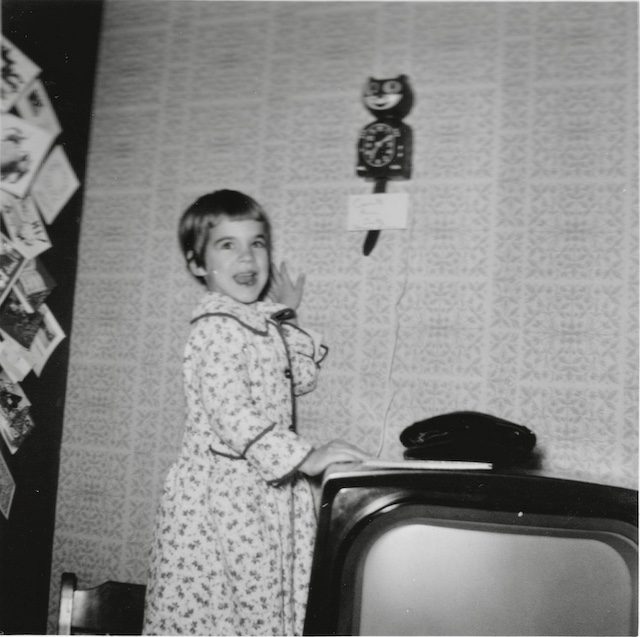A lesson from personal history today, this essay first published in August 20th’s Women Writers, Women’s Books, link here: http://booksbywomen.org/where-are-you-by-carole-duff/

Housebound on a rainy day, my sisters and I play hide and seek. While one sister covers her eyes and loudly counts to ten, I tip-toe into our parents’ bedroom and open the closet door. The left side of the narrow closet has a double row of dowels, the nearest for in-season clothing, stored coats in the back. When I hear my sister’s footsteps, I shut the door, pull the chain to turn off the light, and hang from the back dowel, lifting my feet to hide among the cedar-scented coats.
My sister opens the closet door, turns on the light, peers left, right, and down, then turns off the light and shuts the door. After she leaves the bedroom, I lower my feet to the floor. I hear my sister shout, “You’re it,” when she finds the other, and now they both come looking for me.
Outside the closet door of our parents’ bedroom, they call, “Where are you?” Hanging for the back dowel again, I smirk but do not answer. At six, I’m already good at hiding.
After my sisters leave, I slip out of the closet and join them in the kitchen.
“I win,” I declare triumphantly.
Puzzled, they look around and beyond me. “Where were you?”
“If I tell then you’ll find me next time.” I rock back on my heels and grin.
As I remember, I always won hide-and-seek when I hid in my parents’ closet, though that’s probably not true. Convinced that I was good at hiding from others—including God because my family didn’t believe in Him—I even fooled myself. Until on the cusp of the second stage of life at age twenty, I hit the what-am-I-supposed-to-do-with-my-life question and, for the first time, asked God, “Where are You?” And yet, when my teaching profession appeared at the first faculty meeting, I nodded in recognition and said, “Never mind, I found the answer myself.”
Later in the middle stage of life at age forty, I hit the how-could-I-have-failed-so-miserably-at-marriage question. This time God asked, “Where are you?” Uncertain, I answered “I’m listening.” Still later, at age sixty as I entered the third season of life, I hit the who-am-I-now-that-I’m-no-longer-parenting-or-teaching question. Only then did the mask I’d hidden behind since childhood slip from my grasp. Only then did I realize I was a fake, a shadow of my real self. Only then did I wonder why He called, “Where are you?” when He always knew.
****
In this first game of hide-and-seek, Adam and Eve hide their disobedience in the garden. God seeks not because He doesn’t know where they are but to draw them out. He wants them to see their situation, leave their hiding place, drop their coverings, and seek Him in return.
Whether we realize or not, we replicate Adam and Eve’s hiding in our own lives. According to Father Richard Rohr’s stages of spiritual development, once we establish our body and self-image, we move into a stage where we think our external behaviors are who we are. To become likeable, we embellish our outside appearance to hide any evidence to the contrary. As adults, we take pride in controlling our thoughts and feelings, though we’re mostly unaware of our true, selfish natures. Unless we experience major defeats or humiliations and use those opportunities to face our cobbled-together, shadow selves, we remain our own little, self-centered gods. Yet, part of us knows we’re hiding, and that part longs to be loved for the warts-and-all we really are.
The story of the Velveteen Rabbit is a case in point. The stuffed animal wants to be real through his human owner’s love. But when the boy contracts scarlet fever, the doctor orders the room disinfected and toys burned. Abandoned in a sack left outside in the garden, the Velveteen Rabbit cries in despair. A fairy appears and says, because he is loved, she will make him real. Taken into the forest, he becomes a real rabbit, alive, healthy, and at home.
It’s not a stretch to see ourselves as Velveteen Rabbits, and the fairy our Divine Creator. But, as the story goes, becoming real is a process, a journey that takes time. Our cuddly exteriors must become tired, tattered and worn. Even when it’s obvious that our masks are no longer effective—in fact, they never were—only a few choose to take the next step. Only a few choose to stop hiding and answer, “Here I am.”
****
During my third-season-of-life “who am I” crisis, I began to question my perceptions and let go of the persona I’d worked so hard to construct. Exposing the true me was humiliating and humbling, frightening and freeing. For the first time in my life, I was able to tell the unmasked truth and embrace peace.
Sometimes I want to run back to my old identity—the one that felt in control, the one who thought she always won hide and seek. But the love of God is what makes me feel real and at home—like the Velveteen Rabbit—in Him, not separate. Unmasking is about loving and trusting rather than knowing and understanding what no one can know or understand. With His Spirit as my guide, I am who I am—warts and all.
Linkup with Five Minute Friday: https://fiveminutefriday.com/2024/08/29/fmf-writing-prompt-link-up-history/



Beautiful! I love this, “ Unmasking is about loving and trusting rather than knowing and understanding what no one can know or understand. With His Spirit as my guide, I am who I am.” FMF #17
Good to meet you, Megan, and thank you!
Such beautiful reflections! I enjoyed reading about your childhood hide and seek games, and The Velveteen Rabbit is one of my favorites. Becoming “real” takes a long time. It is the love of Jesus that does it. Thank you for these thoughtful descriptions.
Thank you for reading and commenting, Anna. Yes, becoming “real” does take time, and a “fall upward” in faith. God bless you! -C.D.